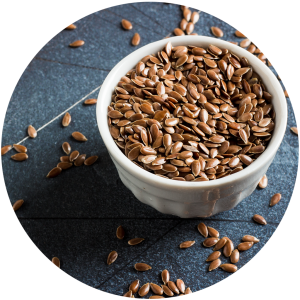Dietary fats are essential components of a balanced diet, providing a concentrated source of energy and playing crucial roles in various bodily functions. Fats are one of the three macronutrients, alongside carbohydrates and proteins. Fats are required in a small amount as part of a healthy balanced diet.
Functions of fats in the diet
- Fats are a concentrated source of energy, providing more than twice the calories per gram compared to carbohydrates and proteins. One gram of fats provides 9 kcal of energy.
- Fats aid in the absorption of fat-soluble vitamins; vitamins A, D, E and K.
- Fats help to regulate body temperature and keep the body warm.
- Fats form a protective layer around vital organs such as the heart, lungs and kidneys to protect against shock.
Types of fats in the diet
1. Saturated fats
Saturated fats are a type of fats that are commonly found in certain foods. They are typically solid at room temperature. These types of fats are mainly found in animal products such as fat on meats, meat products, butter, ghee, lard, and dairy products including cheese. Some vegetable fats are also high in saturated fats such as cocoa butter, palm, and coconut oil.

Coconut Oil
2. Unsaturated fats
Unsaturated fats, which are liquid at room temperature, are considered beneficial fats because they can improve blood cholesterol levels, ease inflammation, stabilize heart rhythms, and play a number of other beneficial roles. Unsaturated fats are predominantly found in foods from plants, such as vegetable oils, nuts, and seeds. Despite being considered as ‘good fats’, unsaturated fats should still be consumed in moderation. There are two types of unsaturated fats:
– Monounsaturated fats are found in foods such as avocados, nuts (almonds, hazelnuts), seeds such as sesame and pumpkin seeds and olive, peanut and canola oils.

Avocado
– Polyunsaturated fats are found in foods such as sunflower, corn and soybean oils, walnuts, flaxseeds and fish. Omega-3 and Omega-6 fats are a type of polyunsaturated fatty acids. These cannot be produced by the body, so a small amount is required from the diet.
- Omega-3 is found in oily fishes such as tuna, sardines, salmon or mackerel. Plant sources of Omega-3 include walnuts, flaxseeds, linseeds or green leafy vegetables.
- Omega-6 are found in nuts, seeds and vegetable oils and spreads, made from corn, or sunflower.

Flaxseed

Oily Fish

Sunflower Oil
3. Trans-fats
Trans-fats are naturally present at low levels in some dairy foods and meats but are also found in processed & hardened vegetable oils. They can be found in partially hydrogenated vegetable fats and oils, which are often used by food manufacturers to help prolong shelf life of food products. Food items that contain trans-fats include margarines, cakes, biscuits, fried and baked foods and fast foods. However, the Food Regulations 2024 require that food manufacturers disclose the amount of trans-fats in their products. In addition, the Food Regulations 2024 state that food in which edible fats are used as an ingredient shall contain industrial trans fatty acids not more than 2g per 100g of total fat present in the food.

Fast Food
Current recommendations on fat intake in the diet
The World Health Organization recommends that adults should limit total fat intake to 30% of total energy intake or less, approximately 3 tablespoons per person per day. Fats consumed should be primarily unsaturated, with no more than 10% of total energy intake coming from saturated (20g for an adult female and 30g for an adult male) and no more than 1% of total energy intake from trans-fats from both industrially produced and ruminant animal sources.
Finding fats on food labels
Food labels usually indicate the source of fat(s) used in a food product in the ingredients list. Quantity of fats in a food product is usually mentioned within the nutritional information section on the food label. Total fat on a food label indicates the total amount of fat in a serving of the food. It includes all types of fats – saturated, monounsaturated, polyunsaturated and sometimes trans-fats.
Consequences of an excess of fats in the diet
Consuming an excess of fats in the diet can have various consequences on health. A diet high in fats can lead to an increased risk in weight gain and obesity, elevated blood lipids, inflammation, cardiovascular diseases, liver issues amongst others.
High saturated and trans-fats food watchlist
- Fatty cuts of red meat such as beef, lamb, pork
- Processed meats such as sausage, bacon, hot dog
- Full-fat dairy products such as whole milk, cheese, butter, cream
- Poultry with skin
- Lard and solid fats
- Tropical oils – coconut oil, palm oil
- Processed and fried foods
- Fast food
- Certain baked goods made with butter or lard
- Partially hydrogenated oils, found in some margarines, vegetable shortening, and commercially baked goods
- Fried and deep-fried foods
- Processed snack foods such as crackers, chips
- Some commercially prepared baked goods such as doughnuts, pastries, cookies
- Certain margarines and spreads
Tips to reduce fat intake in the diet
- Choose fresh and minimally processed foods.
- Opt for lean cuts of meat such as skinless poultry, lean beef. Remove skin from poultry and trim any visible fats from meat.
- Include 2-3 servings of fish, especially fatty fish such as tuna, mackerel and sardines, per week in your diet.
- Choose low-fat or fat-free dairy products such as skimmed milk, low-fat yogurt, and reduced-fat cheese or low fat non-dairy alternatives.
- Reduce the consumption of foods high in saturated fats, such as fatty cuts of meat, full-fat dairy, and tropical oils.
- Be mindful of trans-fats. Read food labels to check for its presence on a food product.
- Choose cooking methods that use little to no oil such as grilling, baking, steaming, or poaching instead of frying foods. If frying, use healthier oils like olive oil or canola oil instead of using butter, ghee or lard.
- Use non-stick pans to reduce the need for added fats in cooking.
- Increase the intake of fresh fruits and vegetables as they are low in fat and high in fiber.
- Opt for snacks that are low in saturated and trans fats. Examples include fresh fruit, raw vegetables, or a handful of nuts.
- Read food labels to compare fat content in products and choose those with reduced fat content.
- Be mindful of portion size, even when eating healthier fat sources as an excess can lead to negative health consequences.
- Limit the consumption of fast food and highly processed foods.
Control of fats in food
As per the Food Regulations 2024, food must comply with the maximum permissible level of saturated fats. For example, food such as biscuits, wafers, pastry and cakes must have a maximum permissible level of 15g of saturated fats per 100g of edible portion.
Source: British Dietetics Association & Department of Health, State Government of Victoria, Australia
